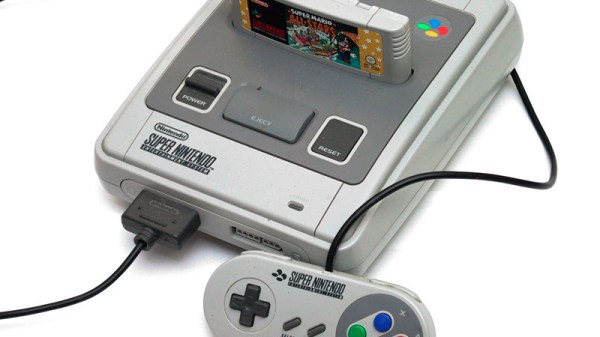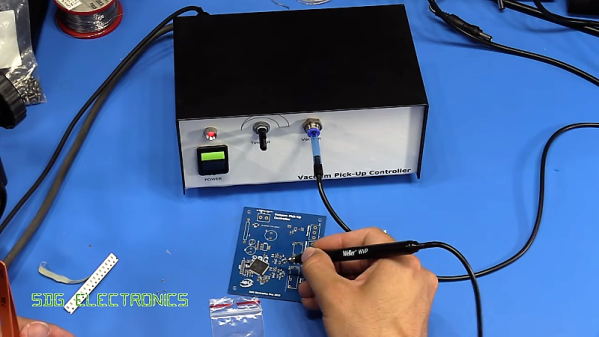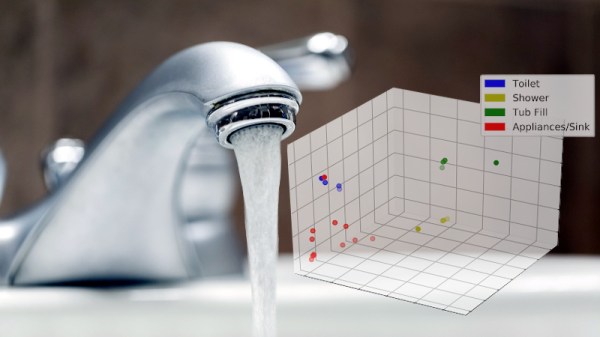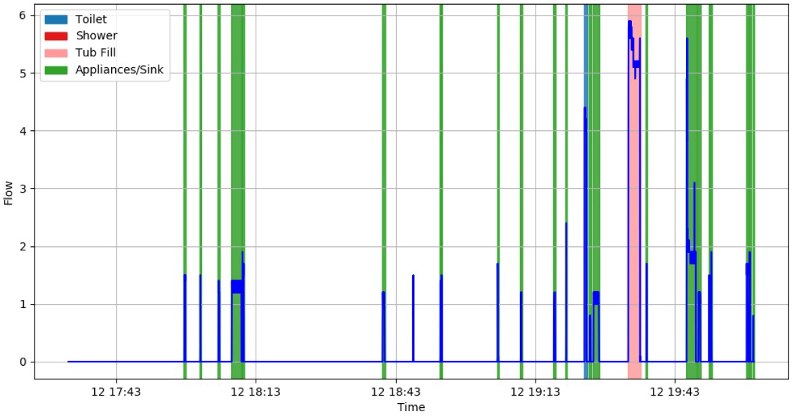The bsnes emulator has a new overclocking mode to eliminate slowdowns in SNES games while keeping the gameplay speed accurate. We’re emulating old SNES hardware on modern machines that are vastly more powerful. Eliminating slowdowns should be trivial, right? For an emulator such as bsnes, which is written to achieve essentially pixel-perfect accuracy when emulating, the problem is decidedly non-trivial. Stick around to learn why.
Day: August 14, 2019
[Jessica] Is Soft On Robot Grippers
It is an old movie trope: a robot grips something and accidentally crushes it with its super robot strength. A little feedback goes a long way, of course, but futuristic robots may also want to employ soft grippers. [Jessica] shows how to build soft grippers made of several cast fingers. The fingers are cast from Ecoflex 00-50, and use air pressure.
A 3D-printed mold is used to cast the Ecoflex fingers, which are only workable for 18 minutes after mixing, so it’s necessary to work fast and have everything ready before you start.
Keezer Controller Keeps The Kegs Pouring
It’s always a good idea to keep a few brews in the fridge ready to go, but being able to offer your guests a fresh-poured draught beer is another step above. It’s not trivial, but with a few kegs, a freezer and the right CO2 parts, it’s achievable for the average hacker. [Ben Brooks] had a keezer (keg freezer) setup that had been doing the job quite well, but wanted to take things up a notch.
Wishing to know when it was time to start brewing more beer, [Ben] needed a way to measure how much was left in the individual kegs. Opting to weigh them, initial experiments with a hand-made capacitive sensor failed when moisture in the freezer began to ruin the sensor’s performance. Switching to a strain-gauge based setup enabled more accurate readings to be taken with no drift over time. Solenoids were added to enable the taps to be shutdown outside of beer o’clock, and a Particle Photon and Raspberry Pi were put to work to give the whole project a slick web interface. There’s even a monitor to show guests what’s on tap!
It’s a tidy improvement to a home keg setup, and ensures [Ben]’s guests won’t be left thirsty in the middle of a party. We’ve seen other instrumented beer rigs before, too. If you’re working on your own homebrewing masterpiece, be sure to drop us a line.
Control The Suck With This Manual Vacuum Pick-And-Place Tool
The tapes that surface-mount devices come in may be optimized for automated pick and place, but woe betide those who try to dig components out manually. No matter what size package, the well on the tape seems to be just a wee bit too small to allow tweezers to grip it, so you end up picking the thing up edgewise or worse, pinching too tight and launching the tiny thing into The Void. We hope you ordered extra.
Such circumstances are why vacuum handlers were invented, but useful as they are for picking and placing SMDs, they aren’t perfect. [Steve Gardener]’s sub-optimal experience with such tools led him to build this custom vacuum pick-and-place tool. It’s based on an off-the-shelf Weller unit, of which only the handpiece remains. A bigger, more powerful vacuum pump is joined in a custom enclosure by a PCB with a PIC18F13K22 microcontroller, a power supply, a solenoid to control the vacuum, and a relay to switch the pump. A footswitch starts the pump and closes the vacuum vent; letting off the pedal opens the vent to drop the part, while the pump keeps running for a variable time. This lets him rapidly work through a series of parts without having to build vacuum back up between picks. The video below shows the build and the tool in action.
We love the idea of this tool, and the polished look is pretty slick too. If manual pick-and-place isn’t for you, though, maybe converting a 3D-printer into an automated PnP is something to check out.
Continue reading “Control The Suck With This Manual Vacuum Pick-And-Place Tool”
New Life For Old Nintendo Handhelds With ESP32
The Game Boy Pocket was Nintendo’s 1996 redesign of the classic 1989 handheld, giving it a smaller form factor, better screen and less power consumption. While it didn’t become as iconic as its predecessor, it still had enough popularity for modders such as [Eugene] to create new hardware for it. His Retro ESP32 board is a drop-in replacement for the console’s motherboard and screen, giving it a whole new life.
 [Eugene] is no stranger to making this kind of mod, his previous Gaboze Pocaio project did the exact same thing with this form factor, only with a Raspberry Pi instead of the ESP32-WROVER used here. His choice of integrated SoC was based on the ODROID-GO, which is a similar portable console but with its own custom shell instead.
[Eugene] is no stranger to making this kind of mod, his previous Gaboze Pocaio project did the exact same thing with this form factor, only with a Raspberry Pi instead of the ESP32-WROVER used here. His choice of integrated SoC was based on the ODROID-GO, which is a similar portable console but with its own custom shell instead.
This project doesn’t stop at the hardware though, the Retro ESP32 (previously dubbed Gaboze Express) also offers a user-friendly interface to launch emulators. This GUI code can be used with the ODROID as well since they share the same hardware platform, so if you have one of those you can try it out right now from the software branch of their repository.
If the idea of replacing retro tech innards with more modern hardware is something that interests you, look at what they did to this unassuming Osborne 1, or this unwitting TRS-80 Model 100. Poor thing didn’t even see it coming.
India Launched A Moon Orbiter, Lander, And Rover All In One Shot With Chandrayaan-2
On July 22nd, India launched an ambitious mission to simultaneously deliver an orbiter, lander, and rover to the Moon. Launched from the Satish Dhawan Space Centre on a domestically-built GSLV Mk III rocket, Chandrayaan-2 is expected to enter lunar orbit on August 20th. If everything goes well, the mission’s lander module will touch down on September 7th.
Attempting a multifaceted mission of this nature is a bold move, but the Indian Space Research Organisation (ISRO) does have the benefit of experience. The Chandrayaan-1 mission, launched in 2008, spent nearly a year operating in lunar orbit. That mission also included the so-called Moon Impact Probe (MIP), which deliberately crashed into the surface near the Shackleton crater. The MIP wasn’t designed to survive the impact, but it still secured India a position on the short list of countries that have placed an object on the lunar surface.
If the lander component of Chandrayaan-2, named Vikram after Indian space pioneer Vikram Sarabhai, can safely touch down on the lunar surface it will be a historic accomplishment for the ISRO. To date, the only countries to perform a controlled landing on the Moon are the Soviet Union, the United States, and China. Earlier in the year, it seemed Israel would secure its position as the fourth country to perform the feat with their Beresheet spacecraft, but a last second fault caused the craft to crash into the surface. The loss of Beresheet, while unfortunate, has given India an unexpected chance to take the coveted fourth position despite Israel’s head start.
We have a few months before the big event, but so far, everything has gone according to plan for Chandrayaan-2. As we await word that the spacecraft has successfully entered orbit around the Moon, let’s take a closer look at how this ambitious mission is supposed to work.
Data Mining Home Water Usage; Your Water Meter Knows You A Bit Too Well
The average person has become depressingly comfortable with the surveillance dystopia we live in. For better or for worse, they’ve come to accept the fact that data about their lives is constantly being collected and analyzed. We’re at the point where a sizable chunk of people believe their smartphone is listening in on their personal conversations and tailoring advertisements to overheard keywords, yet it’s unlikely they’re troubled enough by the idea that they’d actually turn off the phone.
But even the most privacy-conscious among us probably wouldn’t consider our water usage to be any great secret. After all, what could anyone possibly learn from studying how much water you use? Well, as [Jason Bowling] has proven with his fascinating water-meter data research, it turns out you can learn a whole hell of a lot by watching water use patterns. By polling a whole-house water flow meter every second and running the resulting data through various machine learning algorithms, [Jason] found there is a lot of personal information hidden in this seemingly innocuous data stream.
The key is that every water-consuming device in your home has a discernible “fingerprint” that, with enough time, can be identified and tracked. Appliances that always use the same amount of water, like an ice maker or dishwasher, are obvious spikes among the noise. But [Jason] was able to pick up even more subtle differences, such as which individual toilet in the home had been flushed and when.
Further, if you watch the data long enough, you can even start to identify information about individuals within the home. Want to know how many kids are in the family? Monitoring for frequent baths that don’t fill the tub all the way would be a good start. Want to know how restful somebody’s sleep was? A count of how many times the toilet was flushed overnight could give you an idea.
In terms of the privacy implications of what [Jason] has discovered, we’re mildly horrified. Especially since we’ve already seen how utility meters can be sniffed with nothing more exotic than an RTL-SDR. But on the other hand, his write-up is a fantastic look at how you can put machine learning to work in even the most unlikely of applications. The information he’s collected on using Python to classify time series data and create visualizations will undoubtedly be of interest to anyone who’s got a big data problem they’re looking to solve.





















